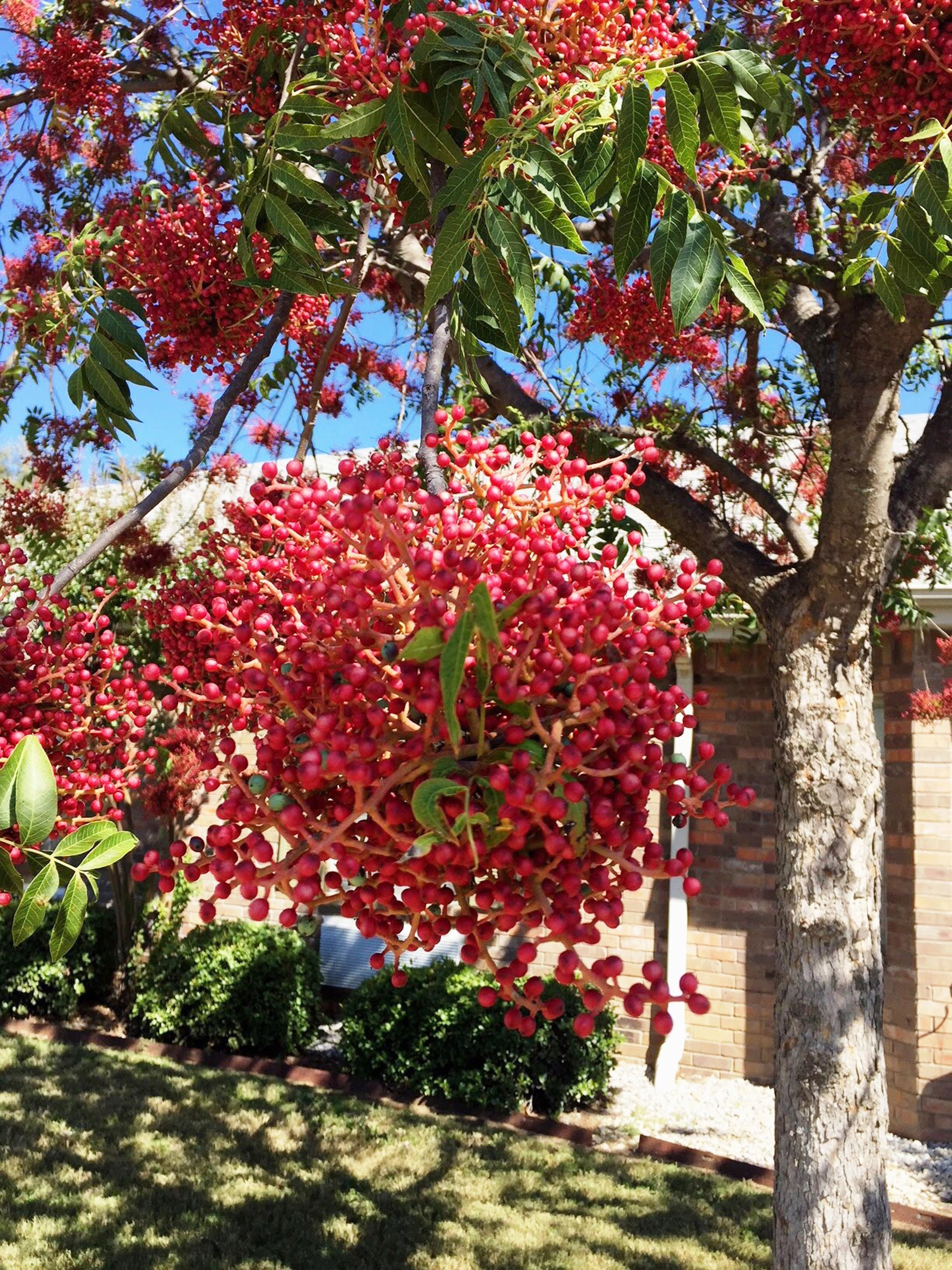Farm & Ranch
The Garden Guy – The Chinese Pistache Tree

By Norman Winter
The flaming fall foliage of the Chinese pistache trees stands as visual testaments that they are indeed champions of color. The fiery oranges, reds and yellows scream as if to say, “Look at me.” Believe me, you will, and if you are packing a camera, you will take a photo. They are not to be ignored.
When I was director of the Coastal Georgia Botanical Gardens, I would walk by an old specimen every day and then out of the blue, so to speak, I noticed an old USDA tag hanging down that said it was planted in 1938. Happy 80th birthday!
This tree stands as one of the true testaments to one of our country’s great plant exploration acquisitions, the Chinese pistache. This was discovered by plant explorer and horticultural hero, if you will, Frank Meyer.
If you are not familiar with the Chinese pistache, botanically speaking it is known as Pistacia chinensis. I first became acquainted with the Chinese pistache when it was selected as a Texas Super Star Winner. Texas fall color is sometimes hard to come by, but this tree is rock solid and reliable. In California, it has been used as a rootstock for the delicious pistachio nut trees, though other species have now been chosen.
The Chinese pistache is also drought tolerant. It is recommended in places like New Mexico and Arizona and is native to Western China. When selecting your location, keep in mind that it does not like wet winter feet, so choose a site that drains well.
It is cold hardy from zones six through nine, meaning from St. Louis to Orlando, gardeners can relish the dark green leaves that become a blaze of fall color.
To read more pick up a copy of the November 2018 NTFR issue. To subscribe call 940-872-5922.
Farm & Ranch
Hazards of Backyard Poultry

By Barry Whitworth, DVM
Having backyard poultry is a popular agriculture enterprise. According to the United States Department of Agriculture, 0.8 percent of all households in the United States have chickens. People keep chickens for a variety of reasons with table eggs being one of the more common reasons.
Unfortunately, some of these poultry producers are not aware of the hazards that come with keeping poultry because many times they carry pathogens but appear healthy.
Chickens are carriers of several zoonotic diseases. These are diseases that can be passed from animals to humans. According to a recent survey in Pennsylvania, a majority of backyard poultry producers were aware of the dangers of avian influenza. However, this study also revealed that far fewer producers were aware of the risk of possible exposure to Salmonella and Campylobacter.
The lack of knowledge about the hazards of raising poultry likely contributes to the continued issues of Salmonella outbreaks associated with backyard poultry. In 2023, the Centers for Disease Control and Prevention reported 1,072 illnesses of Salmonella linked to backyard poultry, and 272 of those patients required hospitalization. Oklahoma reported 43 individuals with the disease.
To read more, pick up a copy of the April issue of NTFR magazine. To subscribe by mail, call 940-872-5922.
Farm & Ranch
Ag Elsewhere: Wyoming

By Tressa Lawrence
Babies are tucked away in every nook and cranny. Many ranchers across Wyoming have baby animals popping up all over this time of year.
Farm & Ranch
Ag Elsewhere: Montana

By Lindsey Monk
Another load of grain in to keep feeding the calves until the green grass can really start popping.
-

 Country Lifestyles1 year ago
Country Lifestyles1 year agoScott & Stacey Schumacher: A Growth Mindset
-

 Equine7 months ago
Equine7 months agoThe Will to Win
-

 Country Lifestyles7 years ago
Country Lifestyles7 years agoStyle Your Profile – What your style cowboy hat says about you and new trends in 2017
-

 Country Lifestyles4 years ago
Country Lifestyles4 years agoAmber Crawford, Breakaway Roper
-

 HOME7 years ago
HOME7 years agoGrazing North Texas – Wilman Lovegrass
-

 Country Lifestyles7 years ago
Country Lifestyles7 years agoDecember 2016 Profile, Rusty Riddle – The Riddle Way
-

 Country Lifestyles8 years ago
Country Lifestyles8 years agoJune 2016 Profile – The man behind the mic: Bob Tallman
-

 Outdoor9 years ago
Outdoor9 years agoButtercup or Primrose?






